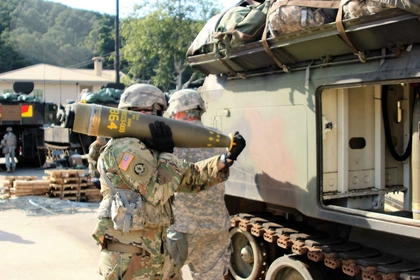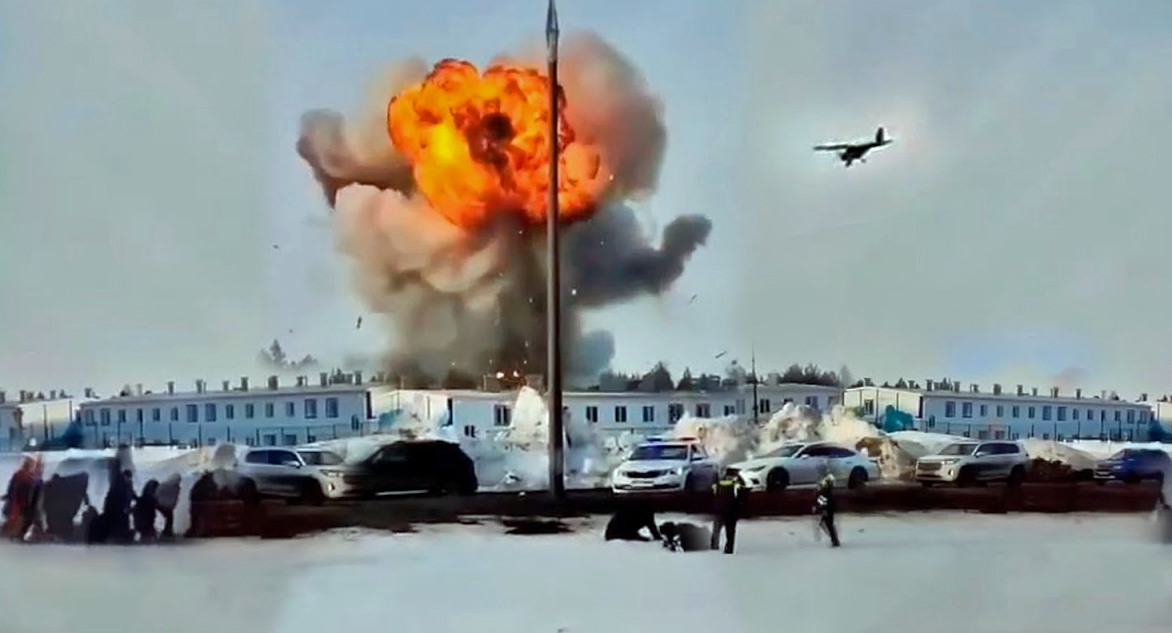The news that the US is providing Ukraine with cluster munitions has caused objections from a number of politicians and campaign groups. This opposition derives from the same sound humanitarian reasons that led to the creation of the 2010 Convention on Cluster Munitions (CCM). In fact, in my view, while the CCM is a very worthy treaty it is based on the historical use of “dumb” munitions, used indiscriminately and in tactically inappropriate circumstances and takes no account of how things have changed.
What is a cluster munition?
JOIN US ON TELEGRAM
Follow our coverage of the war on the @Kyivpost_official.
The CCM defines cluster munition as “a conventional munition that is designed to disperse or release explosive submunitions, each weighing less than 20 kilograms.” Thus, a cluster munition consists of a carrier container (the body of an artillery round, rocket or air-delivered canister) from which smaller sub-munitions are dispensed to strike a target.
The dispenser releases the submunitions above the target at a pre-ordained height, the submunitions spread as they fall, exploding when they hit a target or the ground. The spread is called the “footprint” the size of which is affected by the number of sub-munitions contained in the carrier, the height and angle of release.
The standard US submunition is called dual-purpose improved conventional munition, or DPICM. As its name suggests it is dual-purpose because it has effects on both vehicles or materiel as well as personnel. The most recent version, the M77, has a “shaped charge” penetrator and a fragmenting body. Each 155 mm artillery shell carries 88 M77 submunitions.

Ukrainian Drone Reportedly Strikes Russian-Seized Ship in Crimea
The Ukraine situation
In the context of the war in Ukraine you have to consider how more effective is the technology being used, the targets and locations in which and against whom the Armed Forces of Ukraine (AFU) will use these weapons.
It seems clear to me that comparing the probable use of cluster munitions in Ukraine in 2023 with the use of similar but technologically inferior weapons during WWII, Vietnam, Lao PDR and even the first Gulf War to be misleading. In considering the case for or against providing Ukraine with the weapons you have to examine how extensively Russian forces have used cluster munitions against civilian populations in Chechnya, Syria and extensively in Ukraine.
The military value of the US dual-purpose improved conventional munition (DPICM) rounds and the way in which the AFU intends to use the munitions in Ukraine is clear and, it seems to me, to render most if not all the issues that formed the basis of the CCM as irrelevant.
Ukraine is currently engaged in its offensive against Russian forces occupying tens of kilometers of trenches, anti-tank obstacles and unmarked minefields. If the offensive fails, then the war will go on because the pressure that success will place on Moscow to sue for peace will disappear.
Ukrainian artillery is critical to break through these Russian defenses, but the AFU has fewer guns than the enemy and limited stocks of ammunition. Studies into cluster munitions, fired from 155 mm artillery (and MLRS), show how much more efficient they are compared with so-called “unitary” high explosive (HE) shells. The US analysis has shown that eight times as many HE rounds are needed to inflict the same amount of damage as a single DPICM shell, particularly against troops in trenches, providing Ukraine with the potential to achieve much greater lethal and suppressive effects for the same number of rounds.
Rights and wrongs
Activist groups object to the use of cluster munitions on four main issues:
Legal – Human Rights Watch (HRW) and others say because of the CCM the use of these weapons is illegal. In fact, the convention is based on an “undertaking” not to use the munition not a legal obligation (unless a nation has produced its own legislation on the subject). If you are not a signatory of the convention, as none of the US, Russia or Ukraine are, then they are not governed by any legal prohibition specific to the munition itself. The intentional use against civilian populations or other non-military targets would be illegal just as it is for any other battlefield weapon.
Reliability – objectors will point to 30-40 percent failure rates among submunitions, based on data that in some cases from 50 or more years ago, although it is true that similar levels of “duds” among weapons fired in Ukraine by Russia have been reported. The modern US DPICM weapons have documented failure rates of less than 2.5 percent – which is actually lower than nearly all the conventional weapons currently employed by either side in Ukraine. That level of failure is totally insignificant when compared with the size of the unexploded munition and landmine contamination the war has already caused and is likely to be encountered on the Russian defensive lines whatever weapons are used.
Accuracy – in the past the accuracy of sub-munition carrying weapons has been a cause for concern but primarily in those air-delivered munitions where the trajectory, height of submunition release and weather conditions often increased the spread of the sub-projectiles. To date the US is only offering to provide 155 mm DPICM to Ukraine which again provides less likelihood of the submunitions “going astray” and the “footprint” from each weapons strike is inherently much smaller with 88 M77 sub-munitions compared with 644 in a HIMARS canister and 247 in a “Rockeye” air-delivered cluster bomb unit (CBU) [obsolete Vietnam War-era CBU-58, a no longer in use – ed.].
Indiscriminate weapon – campaigners against DPICM say it targets indiscriminately but again this is a function of where and how it is used. The Russians, for instance fired thousands of rounds of cluster munitions against Ukrainian population centers such as Kharkiv which was likely a war crime but it would have been whatever weapon was fired. Ukraine has declared that it intends to use the munition only against military targets primarily those defensive lines which are mainly in rural areas which are already surrounded by minefields and probably unexploded ordnance. It becomes trickier if they have to attack Russian defenses in villages and towns but again these are already likely to be heavily contaminated.
The AFU will be using its supplies of DPICM against military targets primarily in open countryside against an enemy who has routinely used Soviet-era cluster munitions and other highly unreliable conventional munitions against civilian targets. We must also not forget this war is being fought on Ukraine’s own territory the AFU is not likely to use a weapon that will cause further unnecessary destruction or unexploded ordnance contamination.
You can also highlight the text and press Ctrl + Enter






